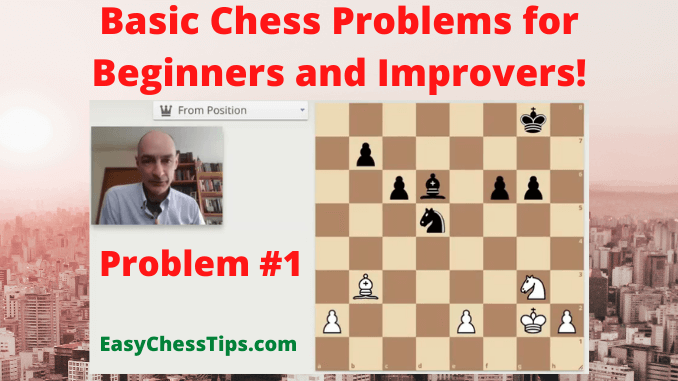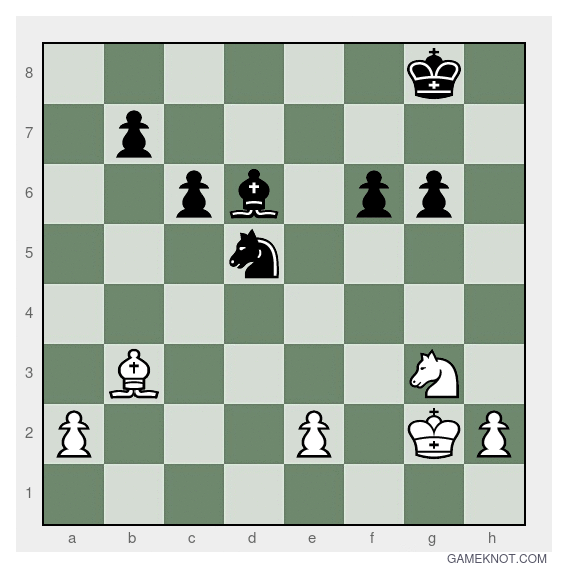
This is the first in a series of short videos that I’ve started making for a group of Japanese college students who are studying English, and who, with some prompting from me, have recently taken up chess. The students all started as complete beginners. Most of them also have no experience of playing Shogi, or Japanese chess. So chess is something completely new for them.
A couple of weeks ago we decided to start a line group to discuss chess. I post a problem to the group once every few days, and then a day or two later I post a video that goes through the problem in what I hope is an easy–to-understand way.
The videos are all less than five minutes long, and each one focuses on just one problem. That makes these videos ideal material for “Easy Chess Tips”!
Each video looks at just one chess problem and explains why the solution is the best (or only) option.
Here’s Problem 1, Taken from 100 Chess problems for the Rest of Us, by T. E. Klemm. It is White to move.
So the question is, what is White’s best move?

I suggest that you try and find the answer yourself, and then watch the video to check your answer and gain a clear understanding of the situation on the board.
If you prefer, you can also check it out on LBRY:
https://open.lbry.com/@easychesstips:c/Chess-Problem-1:e?r=7NWSpzeUWUb455EdVWnTJGzDrrUQevZD
The Solution: Take Advantage of the Pin!
The first thing to check when looking at this kind of problem is the material situation. We see that each side has one Bishop, one Knight, and Black has four pawns whereas White only has three. Also, Black’s pawns are in a better position. One pawn can support the other in each case whereas White’s pawns are isolated; they cannot support each other.
However, it is White’s turn to move and White has a decisive positional advantage. Very often in chess you may have a material disadvantage, but if you have a positional advantage, that can help you to win the game.
So the question is, what is the best move for White? White’s Bishop is the key piece. White’s Bishop is pinning Black’s Knight to the King, so the Knight cannot move. So if White advances the e pawn to e4, it will be able to capture the Knight and win a decisive advantage for White. Black really ought to resign after e4!
Resources
The screenshot was made on Gameknot.com. Check out Gameknot and play for FREE at: https://gameknot.com/#hirohurl (Search for “hirohurl” when you join, and challenge me to a game!)
The video was made using the analysis board at https://lichess.org/
Further Reading
100 Chess Problems for the Rest of Us by T. E. Klemm, available on Amazon Kindle.